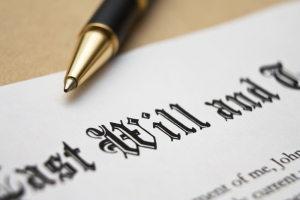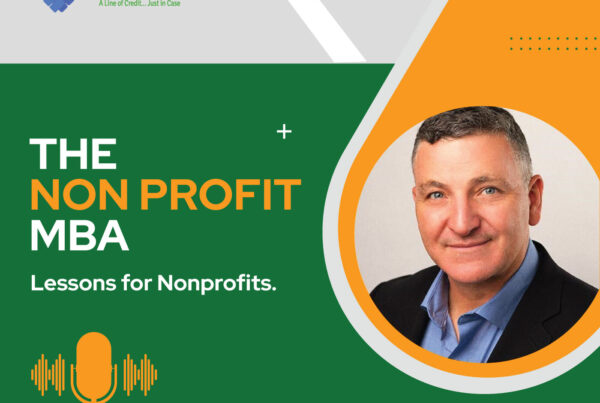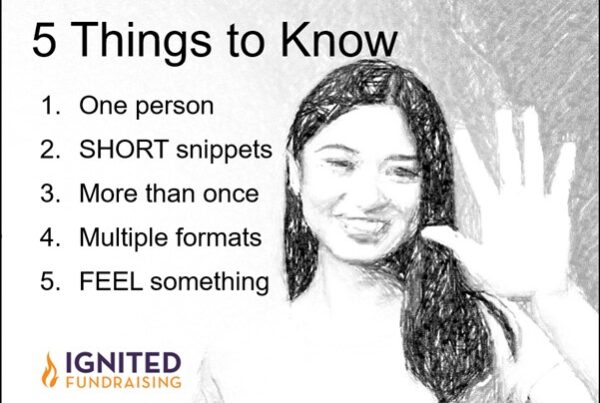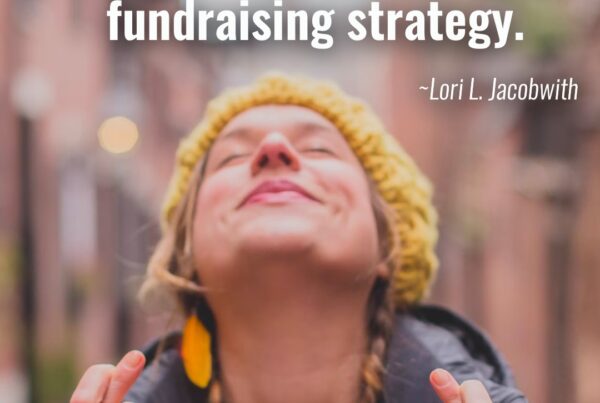Guest Post by Mary Ellis Peterson
I’ve got a terrific way to start off your year. Talk with those passionate supporters who made contributions in the past 60 days and invite their deeper support through a planned giving conversation. To help guide your conversations I’m delighted to share this post from Mary Ellis Peterson who is teaching the members of my Ignited Fundraising Community about planned giving on January 15th. Join us to learn how to remove some of the fear and add ease to your planned giving conversations.

There is a lot of work involved when you’re preparing for a planned giving ask. Case statement, prospect research, giving history, connections – all these are important – but there is one thing that’s easy to forget, what does your donor hear when you ask “would you consider making a gift to us in your will?”
Put yourself in your donors’ shoes and imagine someone is urging you to make a gift in your will. Is the passion you feel for the organization enough to make you do the work of actually making a bequest?
Think of the obstacles. First there are three taboos: talking about your own death, talking about money, and then paying someone a lot of money to help you give something away.
Worse yet is the work involved in pulling together asset information, making difficult decisions, participating in endless meetings, and reviewing and signing documents, none of which give the pleasure you get from making a meaningful gift.
How can you make it easier on your donors?
1. Do your own estate plan first. You really don’t know how the process works and how it feels until you’ve been there on your own. You will have much more understanding of their thought process, and probably some stories and frustrations to share.
2. Listen carefully for clues and make the right ask. A planned gift can not only fulfill a donor’s dreams and your organization’s goals, but can also provide enhanced income, relieve them of a burden, facilitate business succession planning, or take care of a disabled child or aged parent.
3. Consider baby steps. Your donor may not need to do a full-blown estate plan right now. Perhaps a simple beneficiary designation will do the trick. (But always be sure they check with their professional advisor who has a big picture view of their situation.)
About Planned Giving” box_color=”#757777″ radius=”5″]Speaker: Mary Ellis Peterson
[su_button url=”https://ignitedfundraising.com/product/january-15-2015-webinar-talking-donors-planned-giving-mary-ellis-peterson/” style=”flat” background=”#3F2B55″ size=”5″ icon=”icon: check” icon_color=”#Ffffff”]$48 Register now[/su_button][/su_box]
4. Be sensitive to their timing. People do their estate planning for their own reasons – a change in the family – birth, divorce, marriage, moving, or death – retirement, sale of a business or real estate, or an inheritance or windfall. If your timing jibes with theirs, they will already have impetus to carry them through the taboos and obstacles.
5. Explain in terms they can understand, preferably with a story. You need to know the technical details, but initially they only need to understand “what it would look like.” I’ve done quite a few successful CRUT (charitable remainder unitrust) illustrations on a napkin.
6. Consider including other family members in the plan. You don’t want to be the one telling the kids that Mom left half of their inheritance to you. And there are ways family members can derail planned gifts. It’s best to have everyone on board.
7. Paint a picture of the ultimate results. What makes all this work worthwhile? That really is what it’s all about.
When you’re gathering information and working strategy to ask for a planned gift, add one more thing to your checklist – How can I help my donor make giving as simple and painless as possible?
Mary Ellis Peterson is Founder and CEO of Next Level Giving, Inc., which provides affordable planned giving consulting for nonprofits. Before founding Next Level Giving, Inc. Mary was Gift Planning Officer for The Minneapolis Foundation and prior to that she was on the Planned Giving team at The University of Minnesota Foundation.






